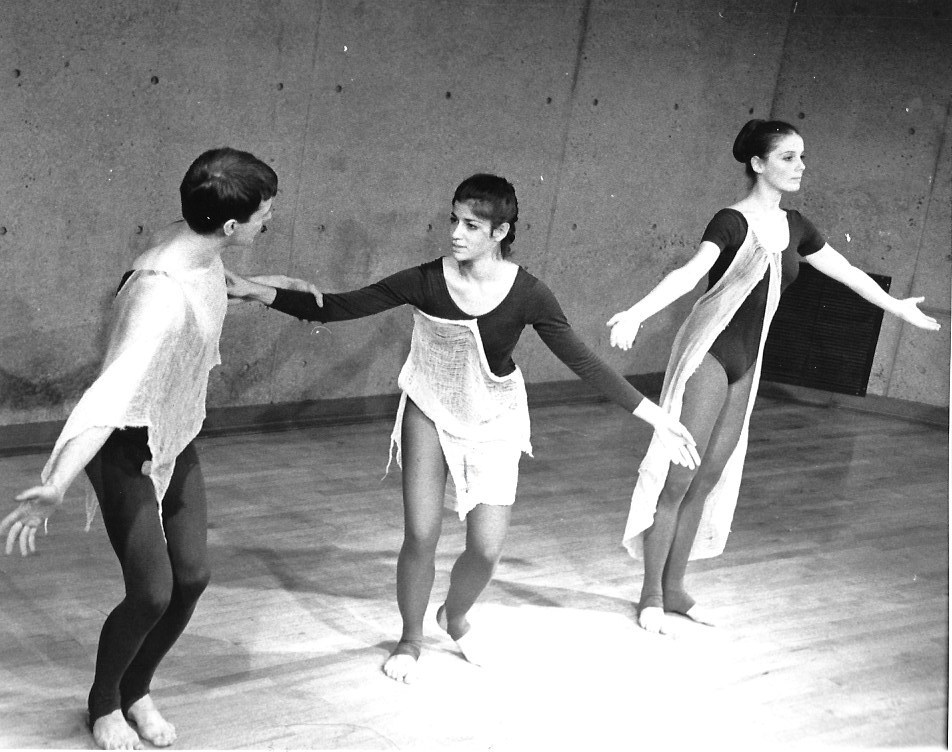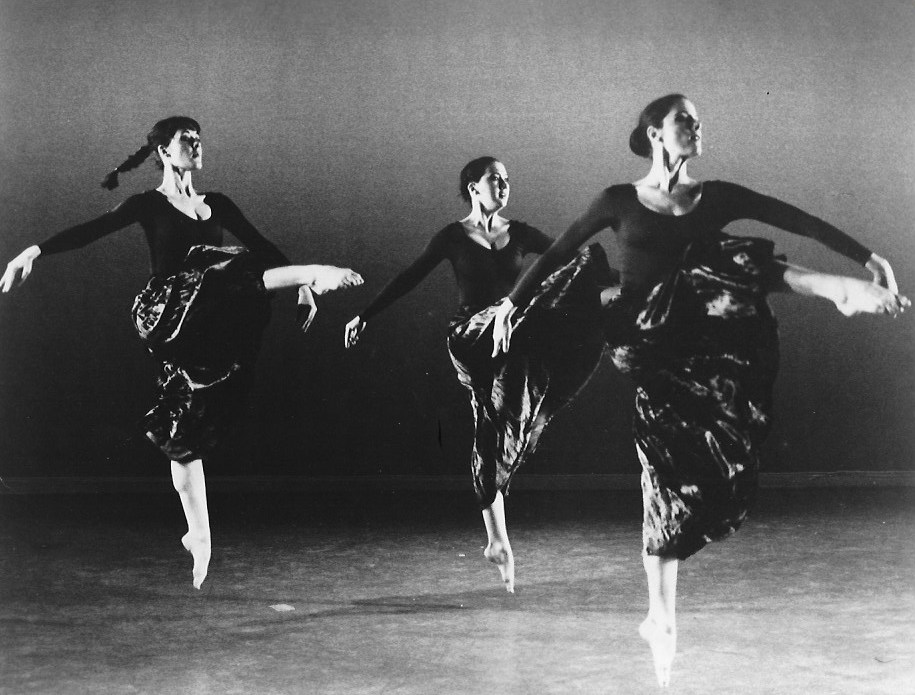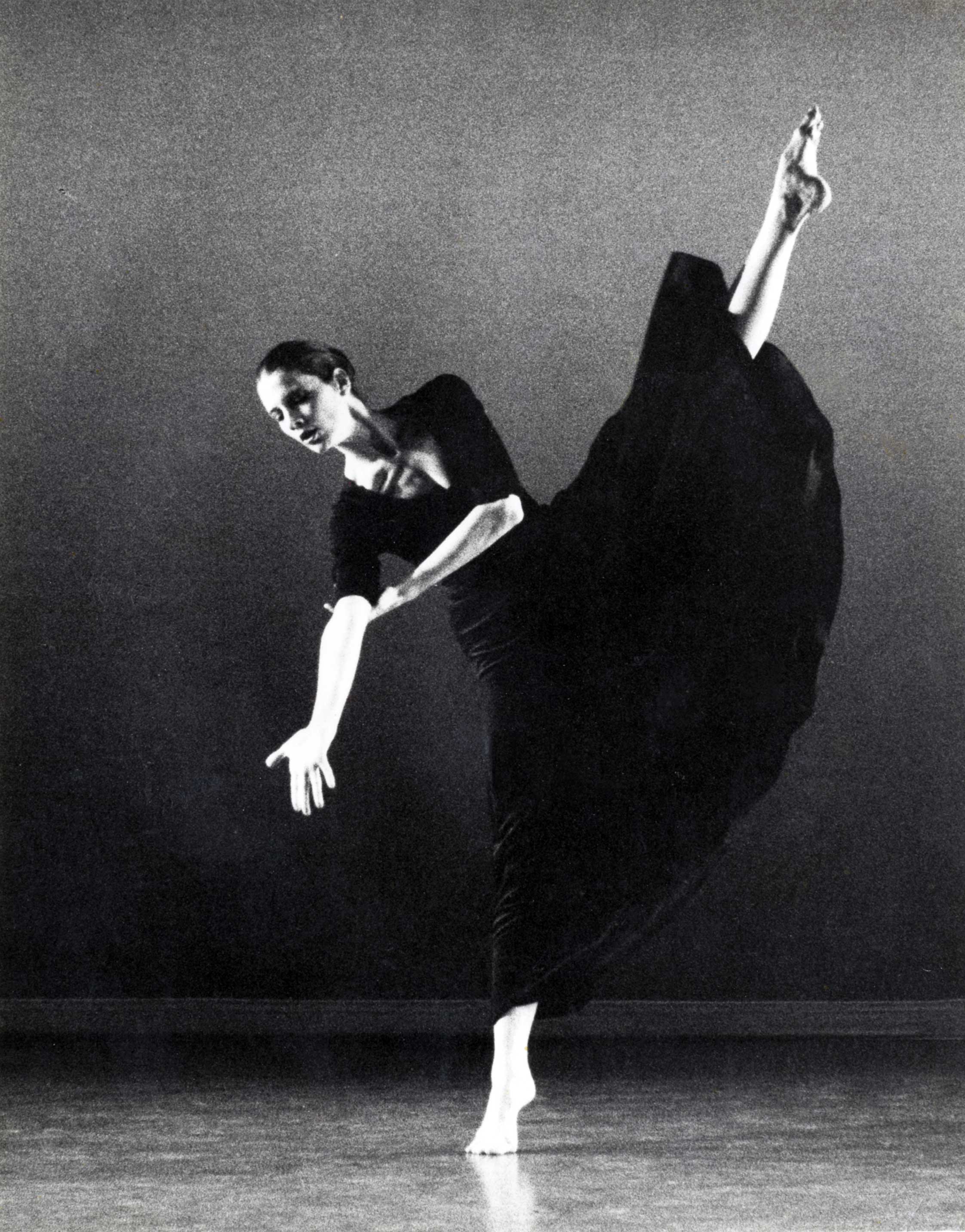It’s late summer 1974 and the events of the past two years are serving as motivation to find a structure to expand and formalize what clearly feels like the right direction for my dance talents at this time. I think I want to start a non-profit organization with the mission of expressing Jewish liturgy, text and history through dance and music. Several people, among them my musical collaborator Irving Fleet, have agreed to be on the board and we already have a lawyer who is donating his services to get us going. Now we need a name.
For two years Irving and I had been studying the Jewish Siddur (prayer book) as explained by the very prominent Rabbi Solomon B. Freehof, who had also been my childhood rabbi. His book The Small Sanctuary had been a wonderful introduction for us. Also helpful were discussions with Rabbi Stanley Garfein, of the Temple in Tallahassee, Florida where both of our families were members at the time. One section of the Yom Kippur High Holiday service intrigued me because it was a retelling of Jewish history from creation to the sacred rituals done on Yom Kippur by the High Priest before the destruction of the Second Temple. It is called the Avodah Service and the word Avodah means “work” in modern Hebrew and “sacred work” in Biblical Hebrew. In a meeting with Stanley he shared that the word was often used in a phrase: Avodah Sh’Balev meaning work of the heart! All uses of the word Avodah fit for me. Being a dancer and running a dance company is indeed WORK. And in the context of what we had been doing for the previous year it felt like sacred work and work of the heart. So the new organization would be called Avodah and the dance company The Avodah Dance Ensemble. Adding the word Ensemble was especially important to me. Kezia just reminded me that I wrote about this in a 1989 Avodah Newsletter:
Back in 1974, when wrestling with a name for a dance company, I especially chose to include the word “ensemble” with Avodah. Ensemble—“a group of complementary parts that contribute to a single effect” – was the goal I had in mind, where the members of the dance company would balance each other and contribute dynamically to creating unity.
And indeed this proved to be very true over the years with an amazing group of dancers, musicians, writers, visual artists and storytellers sharing their talents.
But back to the beginning. My husband Murray and I moved to Tallahassee, Florida from Washington, DC in the summer of 1970. Murray taught at Florida State University while I focused on settling the kids (then 1 ½ and 3 ½ years old) and writing my dissertation. It was good fortune that my major professor from the University of Wisconsin, where I had done all my course work and taken exams, had also relocated to Tallahassee accepting an appointment in the Theatre Department. Writing the dissertation was lonely and required all my perseverance skills and I was very glad that Joe Karioth was able to still work with me even though he was no longer on the Wisconsin faculty. A year later I returned to Madison, to defend my dissertation entitled “The Use of Creative Dramatics as an Aid in Developing Reading Readiness with Kindergarten Children.” Perhaps I will write more about Wisconsin and the work I did in Creative Dramatics, which naturally included a lot of creative movement, at a later time. Once the dissertation was done it became clear that there weren’t many academic teaching opportunities in Tallahassee and I would need to forge my own path.
Loving to teach and work with children in creative dramatics and movement, I focused on how I could build upon those interests. With the encouragement and support of a friend, Carolyn Davis, I approached Temple Israel about whether I could direct dance and drama activities as part of their religious education program, and also use space in their building to teach regular modern dance and creative dramatics classes. And that is what I did and how I was asked by the sisterhood to be director of a mini-musical they wanted to do based on Fiddler on the Roof.
I agreed as long as I had a good musical director. They had someone in mind right away. I have saved the program from the mini-musical named “Tradition” and here is Irving Fleet’s bio:
Irving Fleet, our musical director, is an orthodontist who has always had a big interest in music. He played the piano frequently as a student in Tallahassee schools and in college as a soloist and recitalist. He was the first organist of Temple Israel and started playing for the congregation even before the present synagogue was built. He last appeared in Tallahassee as piano soloist with the Tallahassee Symphony Orchestra in 1963-64. Presently, his biggest area of interest is composing, and he has written a number of songs for voice and piano pieces.
“Fiddler on the Roof” has always been a favorite show of mine, ever since I saw it on Broadway during its original run. I have also always felt close to the production because I knew two original cast members. Sammy Bayes, a townsperson who later played the fiddler, was at Perry-Mansfield Performing Arts Camp the same summer I was there and we had both been in a piece choreographed by Helen Tamiris. Sue Babel, who played Grandma Tzeitel, had been at Connecticut College Summer Program in Dance the same summer I was there.
With the script having been adapted to run about half of the time of the original show, Irving and I faced our first task: casting the production. Lots of members of the community showed up and I was particularly taken with Rueben Capelouto’s audition for Tevye. Irving agreed that his audition was great but was worried about the fact Rueben stuttered. I was shocked … I didn’t know him outside of just meeting him for the audition and he never stuttered in auditioning for Tevye. Others also kept cautioning me that he would be a poor choice. My instincts kept saying that he would be perfect and so he was cast and indeed he was quite wonderful.

Rueben Capelouto as Tevye. Photo by Evelyn Walborsky
“Tradition” proved to be a wonderful community success and gave me an excellent opportunity to get to know members of the community. Many of them would continue to play a role in Avodah’s history. For example, Marianne Mendelson, a high schooler at the time, played one of Teyve’s younger daughters. Years later, while living in the New York area, she became Avodah’s treasurer for a number of years, a supporter of the dance company and a very good friend.
In going through my files to write this blog I found this poem which I read to the cast and which best describes what this experience meant to me.
When rehearsals first began
There were shouts… cries
Sarcastic utterances
“I can’t do that
I’m not a professional
She’s crazy
I’ll never learn my lines!”
Expression of fears and apprehensions of the task that lay ahead.
We’ve come along way from those first weeks
Lines have been learned
Characters developed
Scenes added
Change after change made
Always our goal clearly in sight “A production to make the congregation proud.”
As director, the bulk of my task is done
Thursday nite, after final dress
I sat down, reflected
And made these notes
No matter what the final outcome, applause great or small,
There are certain thoughts which I have to share with this cast.
Each and everyone, from page turner, technical crew, villagers to Tevye,
Deserves praise for a job well done
Often I’ve been harsh
Critical and outspoken
Free with criticism
But limited with praise
Trying to fulfill my role as director, to push you as far as you can go.
The talent within this group is overwhelming
Beyond expectations
A challenge to work with
And watch develop so far
So.. to my professional crew, a special Equity card for everyone here.
Before reading the inscription on each of these cards
One last thought to share
Building a production
Creating a show
Is learning to live with each other, helping one another to do their very best.
We have each had our moments
Tempers lost
Frustrations and tensions revealed
Perhaps out of such moments, we’ve learned to grow
To know more about ourselves and how we get along with others.
For me, this experience has had many rewards
A creative challenge
A chance to use my skills
But most important of all
I’ve grown to feel at home here, in Tallahassee, to know and respect each one of you.
Irving and I had great fun working together. We seemed to challenge each other to be more creative, complementing each other’s skills. By the end of the two-performance weekend we were talking about writing an original musical theater piece together, for which I could be choreographer and director, and he could be composer and musical director. Next week I’ll write about where we went next!

 Print This Post
Print This Post


 JoAnne in the “May the Words” solo from In Praise. Photo by Evelyn Walborsky
JoAnne in the “May the Words” solo from In Praise. Photo by Evelyn Walborsky



























